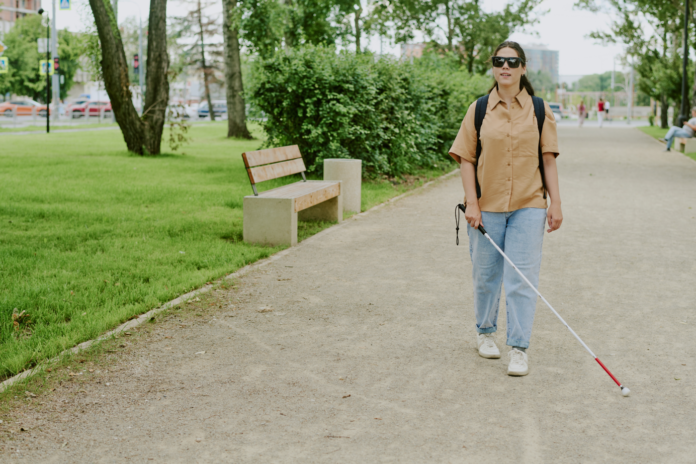Researchers in China have unveiled the prototype of an AI-powered wearable device system that helps blind and visually impaired individuals navigate their surroundings without human assistance. This device represents a major step forward in accessibility technology, as it offers real-time navigation, audio guidance, and object detection to support users as they move through everyday environments. The project is a collaboration between Shanghai Jiao Tong University and other leading institutions.
This news reflects an increasing trend of innovations in assistive AI technology. According to research by Market.us, the global assistive technology market is projected to grow from $22.9 billion in 2023 to $36.6 billion by 2033.
An AI-integrated wearable designed for independence
The AI-integrated wearable system is designed to function as a personal navigation assistant offering real-time directional guidance through audio cues, as reported by Sustainability Times. Built to mimic the function of sight, the device analyzes visual information and translates it into navigational commands, enhancing both autonomy and confidence for the user.
“This system can partially replace the eyes,” lead researcher Gu Leilei said.
The device captures visual input through a front-facing camera and processes the footage with an onboard AI processor, which then delivers navigation instructions through bone-conduction audio. The wearable device also includes bone-conduction headphones, and a camera that operate in tandem to deliver pinpoint navigation. This setup allows users to receive directions while remaining aware of ambient sounds.
In addition, the device was designed to be practical and user-friendly. Currently, its standout AI capabilities include real-time navigation and object recognition, which further help users interact effectively with their environments.
Initial trials of the wearable indicate promising results
Sustainability Times reported that in trials with 20 visually impaired volunteers, most users mastered its operation within just 20 minutes, demonstrating the system’s intuitive design.
The system can recognize 21 objects including household objects. The researchers plan to expand the wearable’s functionality by incorporating advanced object detection, GPS integration, and navigation capabilities for complex outdoor environments.
The initial testing produced promising results and signals a future where assistive technology can enable people to move through the world with greater independence and confidence.
China has unveiled an AI-powered wearable device that helps blind and visually impaired individuals navigate their surroundings without human assistance. The technology represents a major breakthrough in accessibility technology, offering real-time navigation, audio guidance, and object detection to support users as they move through everyday environments.
The project is a collaboration between Shanghai Jiao Tong University and other leading institutions.
An AI-integrated wearable designed for independence
The AI-integrated wearable system functions as a personal navigation assistant offering real-time directional guidance through audio cues, as reported by Sustainability Times. Built to mimic the function of sight, the device analyzes visual information and translates it into navigational commands, enhancing both autonomy and confidence for the user.
The device captures visual input through a front-facing camera and processes the footage with an onboard AI processor, which then delivers navigation instructions through bone-conduction audio. The wearable device also includes bone-conduction headphones, and a camera that operate in tandem to deliver pinpoint navigation via audio cues. This setup allows users to receive directions while remaining aware of ambient sounds.
In addition, the device was designed to be practical and user-friendly.
Initial trials indicate promising results
Sustainability Times reports that in trials with 20 visually impaired volunteers, most users mastered its operation within just 20 minutes, demonstrating the system’s intuitive design.
The system can recognize 21 objects including household objects. The researchers plan to expand the wearable’s functionality by incorporating advanced object detection, GPS integration, and outdoor navigation capabilities.
The initial testing produced promising results and signals a future where blind and visually impaired individuals can move through the world with greater independence and confidence.
